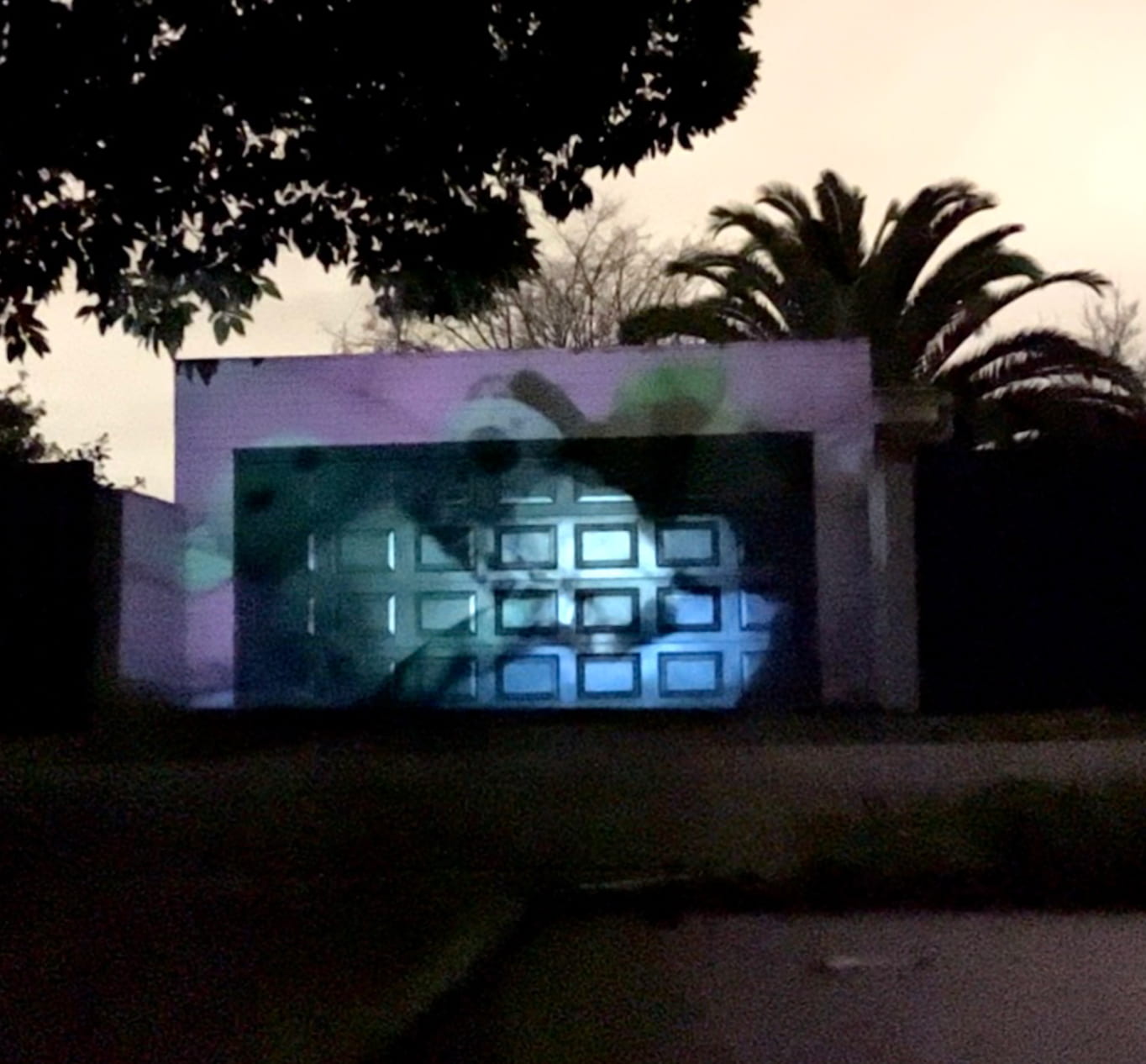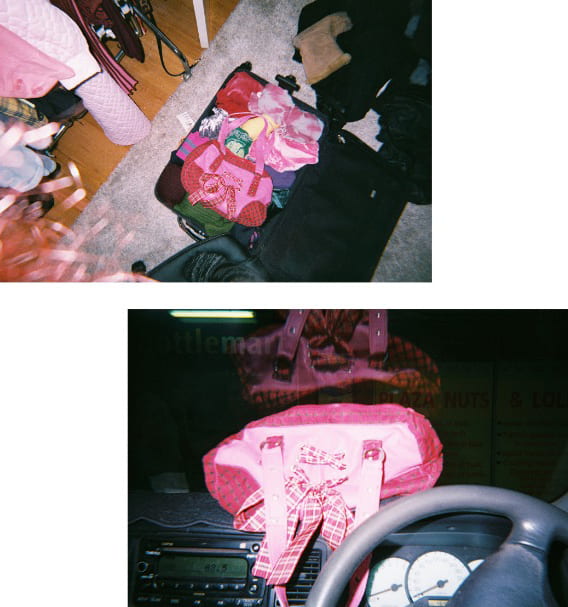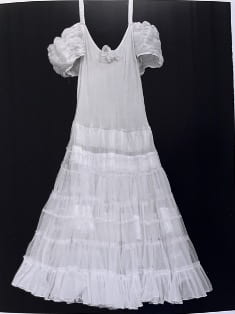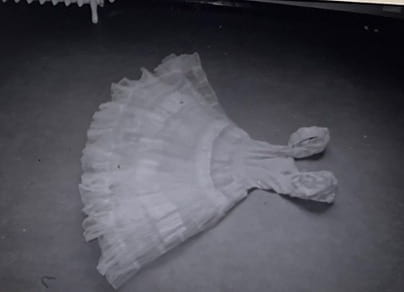Essay by Ivy Rose for Contextualising Practice
So, don’t give me your tenets and your laws.
Don’t give me your lukewarm gods.
I want the freedom to carve and chisel my own face, to staunch the
bleeding with ashes, to fashion my own gods out of my entrails.
And if going home is denied me then I will have to stand and claim my space, making a
new culture—una cultura mestiza—with my own lumber, my own bricks and mortar
and my own feminist architecture (Anzaldua 1987:22).
In this essay I will explore how the act of making can disrupt rigid binary oppositions that label and split up society into ‘us’ and ‘them’. It will also acknowledge the liminal spaces that exist between binary divisions which, it will be argued, acts as a space for othered people to exist within, such as those who cannot be categorised under dominant identity structures. This is motivated through my position as a queer, non-binary person who has experienced displacement and outsiderhood throughout my life. Displacement has resulted in the sense that I am perpetually situated in a state of in-betweenness, often slipping through the cracks of our strict hegemonic society. This essay will focus on three of my artworks all which utilise different mediums and materials. The first work I will discuss is a projection work called Bed and Garage (2023) and Car and Yard (2023), which contradicted the notions of public and private spaces. The second work is a participatory durational performance piece titled The Handbag (2022), chronicling five participants documenting and sharing time with a handbag I created. The Handbag speaks to complications with authorship, melding what is mine/yours and unpacking power dynamics relating to ownership. Lastly, I will be exploring melding separations of absence/presence through the silver gelatin photographic prints Ballerina Princess Dress and Ballerina Princess Dress B-roll, from my body of work Threshold Fantasy (2023).
Binary oppositions and the power of liminal spaces is often situated within feminist, queer and decolonial theories, as a way to investigate sites of divergence (Robertson 2018; Söderbäckc 2017). These fields have identified ‘patriarchal, heteronormative and colonial structures as [being] rooted in dichotomies and dualisms’ (Söderbäckc 2017:384). The urgency of finding ways to deconstruct and challenge these binaries divisions is that they often have violent and exclusionary consequences (Söderbäckc 2017).
The foundation of these discourses can be traced partially back to Gloria Anzaldua’s seminal 1987 book, Borderlands/La Frontera: The New Mestiza, through essays and poems speaking on physical and symbolic borders. As Robertson (2018) distinctly explained in reflecting upon Anzaldua’s ideas of borderlands in relation to binary oppositions, ‘rigid borders create a binary that places identities into an either/or positionality. The polarity that is created by the dichotomy establishes distinct borders around both sides of the binary’ (2018:46).
Lastly, the key theoretical framework I will adopt to aid my investigations into binary oppositions is poststructuralist deconstruction theory. This theory was developed by French philosopher, Jaques Derrida, through his canonical text Of Grammatology, first published in 1967 (Williams 2014). As Rae and Angela articulate, poststructuralism was developed to challenge and expand on the earlier dominant structuralist paradigm (2020), which can be summed up, as Williams notes, as developing ‘truths’ and securing knowledge through identifying differences within structures (2014). The difference is that poststructuralism identifies the limits of these structures and uses ‘its power to resist and work against settled truths and oppositions’ (Williams 2014:3). Therefore, I will be adopting this view in the analysis of my artworks, to identify how each medium has the ability to resist hegemonic understandings of identity, reconfiguring binary thinking.
Definitions of Terms
Liminal space
I refer to liminal space as a transitional space or in-between point that is neither ‘this or that’. It is a space, as McRae and Truelove note, that is fragmented, uncharacterisable, nestled between binary oppositions and resisting definition (McRae 2020, Truelove 2021).
Queer
Queer is used within this paper as an umbrella term for individuals, me included, who exist beyond fixed binary notions of sexuality, gender and self-identity (Mereish et al. 2017).
Non-binary/GNC
Non-binary implies functioning outside of the gender binary (Robertson 2018). Non binary, or gender-non-conforming (GNC), are the labels I use to describe my gender identity. My relationship with gender is ever-changing and confusing. My pronouns (they/them, she/her) often shift and change depending on how I feel from moment to moment. This is why I adopt broad labels to help identify where I am situated on the gender spectrum, avoiding strict classification, allowing me to express and perform alternating gender identities, or exist within the liminal spaces of gender binaries.

Public/Private
This brings me to my first discussion, using my recent experiments with projection to move through borders to displace public/private divides. I will be focusing on two specific live projection stills to explore these binaries, Bed and Garage (figure 1) and Car and Yard (figure 2). The Bed and Garage projection shows a large garage door located on a street nearby to my house with a video of my soft toys laying together on bright pink bed sheets projected over the surface. It is a very intimate and private scene blown up more than twice its original size on the backend of a stranger’s home, in a melding of situational contexts. The act of projecting in a public space was more nerve wracking and vulnerable than I envisioned it to be. Would a bystander walk past? What about a car? Would the people living in the house somehow notice the strange light flooding over their fence? Could I get into trouble for this? The second projection, instead of so vulnerably placing the private in the public, melds the outside and the inside. Car and Yard displays the dashboard of a car I spotted on a walk in my neighbourhood. Featuring three kitsch bobble-figurines of women, presumably souvenirs of the vehicle owner from travel, as each bobble-figurine displays a different city name on its base. This video is projected in my backyard against a white cheesecloth shade-sail covering a patch of pumpkin in the garden. The scene is backlit by the floodlights of the local football oval, where a game was occurring at the time.

Within Car and Yard, the act of projection facilitated moving between spaces, to bring the outside world into my own private domain. Visualising the blend of traditional dichotomies that separate spaces and establishing links and connections between the two. Individuals who live outside binary confines of gender are constantly shifting their identities, as noted by Robertson, through negotiating the spaces they move in and out of (2018). As Mariana Ortega stated, ‘there are spaces of belonging, of fitting in, of confrontation, of forgetting, spaces that can be measured and analysed, clear, definite spaces where we know who we are and why we are there’ (2004:25). The projection Bed and Garage speaks to the idea that the bedroom as a space where one is free to express themselves without being perceived by the outside world, as articulated by Lincoln who discussed how the bedroom and other intimate, private spaces often offers more stability and control than in public contexts and spaces (2012). Yet, Bed and Garage moves further to take this private identity space into a public context, intentionally making room for expressions of self in an arena where, as stated by Ortega, alternative identities are not often platformed (2004). This is articulated by Kevin Hetherington, who states that ‘the space of identity is a heterogeneous, folded, paradoxical and crumpled space in which a distinct singular position is not possible’ (1998:23, cited in Lincoln 2012). Through the medium of projection, intersections and liminal zones between these spaces can be created, shifting the ways in which the private and public shape each other, as well as the individuals that exist within these spaces.

images, 2022.
Mine Yours
The participatory performance piece, The Handbag was created over a two month period in 2022. The Handbag project was based around a bright pink leather handbag I sewed at the beginning of the project timeframe, with plaid and ribbon embellishments serving to make it an easily recognisable and loud object. The handbag, a list of instructions, and a disposable camera loaded with film was then passed onto different participants for five days at a time. At the end of each duration, I would gather and sort the documentation into a living, growing archive. The basis for the project was informed by performance artist Marina Abramović and her explorations with objects within her participatory performances (such as Rhythm 0, 1974), stating that ‘when transformation [with the public] takes place, the object receives the power to function’ (Abramović 2016:199). When I originally created this work most of my theoretical standpoints were in relation to the life of an object through interactions with the public, as well as conversations surrounding performance based ephemeral archives. However, now I will be analysing the processes used to create the work in relation to participation and community-based practices, as well as exploring hierarchies and fundamental oppositions strictly defining artist/viewer, subject/object, mine/yours. The basis for this discussion will be surrounding Claire Bishop’s groundbreaking 2012 book, Artificial Hells: participatory art and the politics of spectatorship. Artificial Hells (2012) addresses the expanded field of post studio practice, focusing on people as a centralised medium and material when relating to participatory work and performance. Bishop’s work discussed the ways in which participation can be used as a politicised working process, unpacking tensions between singular and collective authorship (Bishop 2012). As Garnett has noted, binary divides of authorship between formalised individual practice versus socially engaged community-based works are unproductive, to say the least (2017). By having multiple participants document their time with the handbag, my role as ‘the artist’ was displaced from the creation of the work. This was an intentional move to shift hierarchies away from individualistic approaches, to focus attention, autonomy and power back into the community which surrounds me.

The Handbag is an active attempt in decentering and deconstructing individualism, through the participatory nature of the project. Feeding back into the poststructuralist deconstructive theories rejecting notions of a fixed self-identity (Fraser 1999). Yet, as stated by Fraser, the deconstruction of selfhood ‘still rely on certain core Western techniques of identity such as individuality, boundedness, autonomy, self-realisation and narrative’ (1999:i). Showing how attempts to move past oppressive divisive notions of self/other still utilises a Western way of thinking about individualistic identity. Despite still having a backbone of Western thinking, socially engaged art methodologies have the power to ‘cultivate geographies of social difference’ (Zebracki and Palmer 2017:iii) and forge inclusive, community building practices. Demonstrating how The Handbag project, through its social element, has the ability to bring together self and other into a collaborative liminal space.

print, 10×10”, 2023.
Presence/Absence
I will explore the presence/absence binary, with a focus on performances of identity, through an analysis of my works Ballerina Princess Dress (2023) and Ballerina Princess Dress B-Roll (2023). Ballerina Princess Dress and Ballerina Princess Dress B-Roll are black and white silver gelatin photographic prints, 8 x 10” and 3.5 x 5.5” respectively. The prints feature one of my prized clothing possessions, a 1970’s era bright pink tulle and mesh costume dress, which I scored at a vintage costume sale in Preston last summer. The prints show only the item of clothing, absent of a wearer and with no discernible background, making it difficult to contextualise the garment or ‘read’ the image. The larger print presents the dress hanging in front of a black background, presented in all its glory with the details crisp and sharp and the garment filling the entire frame. The B-roll, smaller print of the garment shows it laying somewhat carelessly on the studio floor. Instead of crisp details and rich blacks and whites, this B-roll image is encompassed with a foggy sheen of grey. Out of use, out of action, discarded.
The duality of these two prints exist in a liminal state of in-betweenness. Playing with my often intentionally performative relationship with gender identity through costuming and dress. Overtly feminising aesthetics to the point of absurdity allows me to have fun with disrupting the rules of how I ‘should’ be expressing my non-binary-ness, as if there is a correct way to exist outside of binary attachments (there’s not). The clothed body can be seen as a site for production of meaning, performance and communication (Anderson and Pantouvaki 2014). But what about when the body is removed? A performance without an audience? This is where absence comes in, understanding that ‘by giving absence substance it has the capacity to embody the fullness of presence’ (Prowse 2018).

print, 3.5×5.5”, 2023.
In previous works, such as My Vessel Cannot Hold Me (2023), I presented images of myself wearing dresses, and although the work had no correlation to themes surrounding gender, the response I got for the work was that it was ‘feminine and powerful’ – from my teacher who knew I was non-binary. That left me wary of presenting my body to be read and perceived by others; I don’t want my identity to be feminised, my body to be gendered, through merely showing myself wearing a garment. This is articulated through feminist poststructuralist theory, identifying ways different bodies get associated with different competencies or in competencies based upon societal representations of masculinity/femininity, Potts states that ‘they elucidate the means by which people come to ‘understand’ and ‘experience’ their sexed bodies in ways which correspond with hegemonic doctrines’ (2014:5). Within both Ballerina Princess Dress prints, the presence of a traditionally feminised garment, absent of a wearer, conjures up an imagined or implied body. A transient, temporal, situationally dependent, subjective body. A body that is present and absent all in the same breath. A body that is me and has nothing to do with me. Additionally, utilising the medium of photography allows this ephemeral nature of presence/absence to be captured and visualised. As Prowse argues by, ‘situating the body at the centre of how we respond to the experience of absence the medium of photography can then visually document and thus communicate that experience’ (2018:185). By transversing between the oppositional spaces of presence and absence, my silver gelatin prints Ballerina Princess Dress and Ballerina Princess Dress B-Roll explore performative relationships with gender and identity.
Conclusion
I have identified that a multimedia practice can foster the contradictory, in-between spaces of liminality, and that this liminal space can prove as a powerful site of resistance for individuals living outside societal binary confines. Working between mediums such as projection, performance, costume and photography offers the power to intertwine various modes of expression, utilising the poststructuralist deconstructive framework to disrupt rigid dualist notions of mine/yours, his/hers, self/other, absence/presence etc. To effectively work with the poststructural framework, an actual structure or binary opposition must be assessed, deconstructed and transformed to show its exclusions (Williams 2014), which I practice through the physical act of making within many mediums. Through this essay I have proven that a multimedia arts practice can prove an effective tool in the disruption of binary oppositions, in the aim to challenge simplistic binary thinking that excludes and displaces non-conforming individuals.
Reference List
Abramovic A (2016) Walk Through Walls: A Memoir, Crown Archetype, New York.
Anzaldua G (1987) Borderlands/La Frontera: The New Mestiza, Aunt Lute Books, California.
Bishop C (2012) Artificial hells : participatory art and the politics of spectatorship, Verso, New York.
Fraser M (1999) Identity Without Selfhood : Simone de Beauvoir and Bisexuality, Cambridge University Press, Cambridge.
Garnett R (2017) ‘Address: Critical irony, neo-authenticity and humour in the art we call public’, Art & the Public Sphere, 6(1):69–79.
Lincoln S (2012) Youth Culture and Private Space, Palgrave Macmillan, London.
McRae J (2020) The Liminal Space, Huia Publishers, Wellington.
Mereish EH, Katz-Wise SL and Woulfe J (2017) ‘We’re Here and We’re Queer: Sexual Orientation and Sexual Fluidity Differences Between Bisexual and Queer Women’, Journal of Bisexuality, 17(1):125–139.
Ortega M (2004) ‘Exiled space, in-between space: Existential spatiality in Ana Mendieta’s Siluetas Series’, Philosophy and Geography, 7(1):25–41.
Potts A (2014) The Science/Fiction of Sex: Feminist Deconstruction and the Vocabularies of Heterosex, Taylor and Francis.
Prowse N (2018) Intervening spaces : respatialisation and the body, Koninklijke Brill, Leiden.
Plummer K (2003) Intimate citizenship private decisions and public dialogues, University of Washington Press, Washington.
Rae G and Ingala E (2020) Historical Traces and Future Pathways of Poststructuralism: Aesthetics, Ethics, Politics, Taylor and Francis.
Robertson N (2018) ‘The Power and Subjection of Liminality and Borderlands of Non-Binary Folx’, Gender Forum, 69(69):45-76.
Söderbäckc M (2017) ‘Liminal Spaces: Reflections on the In-Between’, Architecture and Culture, 5(3):686-699.
Truelove Y (2021) ‘Gendered infrastructure and liminal space in Delhi’s unauthorized(sic) colonies’, Environment and Planning. D, Society & Space, 39(6):1009–1025.
Williams J (2014) Understanding Poststructuralism, Taylor and Francis.
Zebracki M and Palmer JM (2017) Public Art Encounters : Art, Space and Identity, Taylor & Francis.
